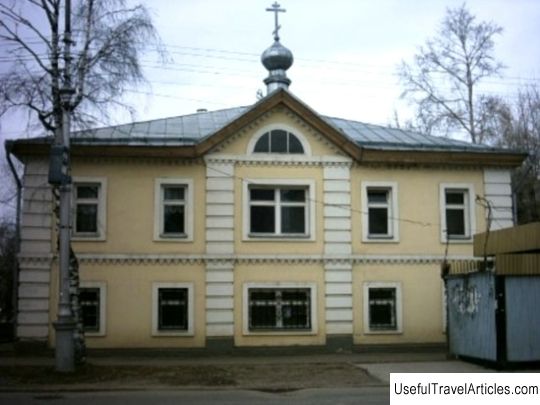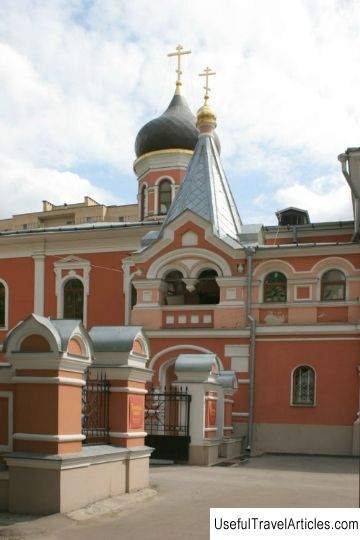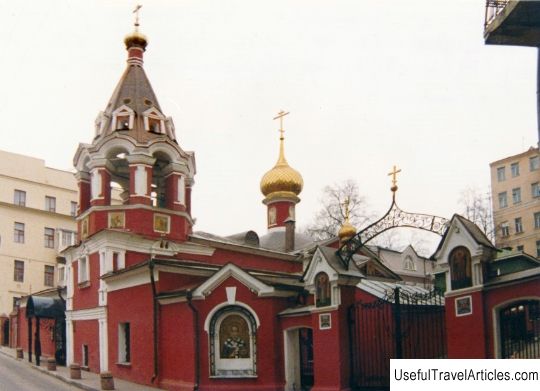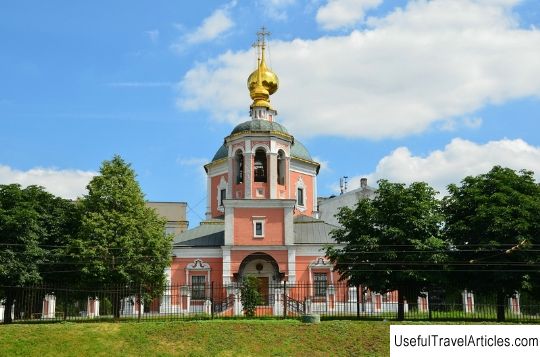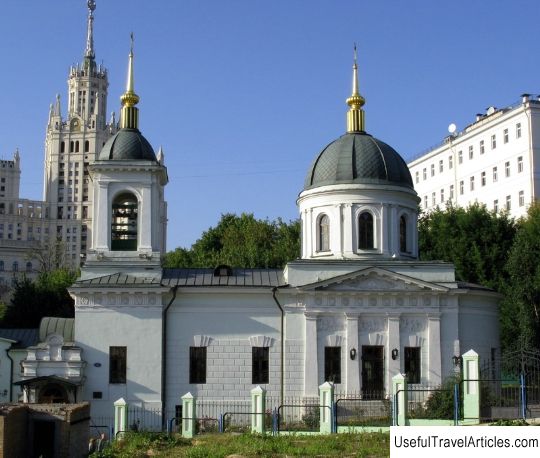Krutitskoe courtyard description and photo - Russia - Moscow: Moscow
Rating: 7,5/10 (100 votes) 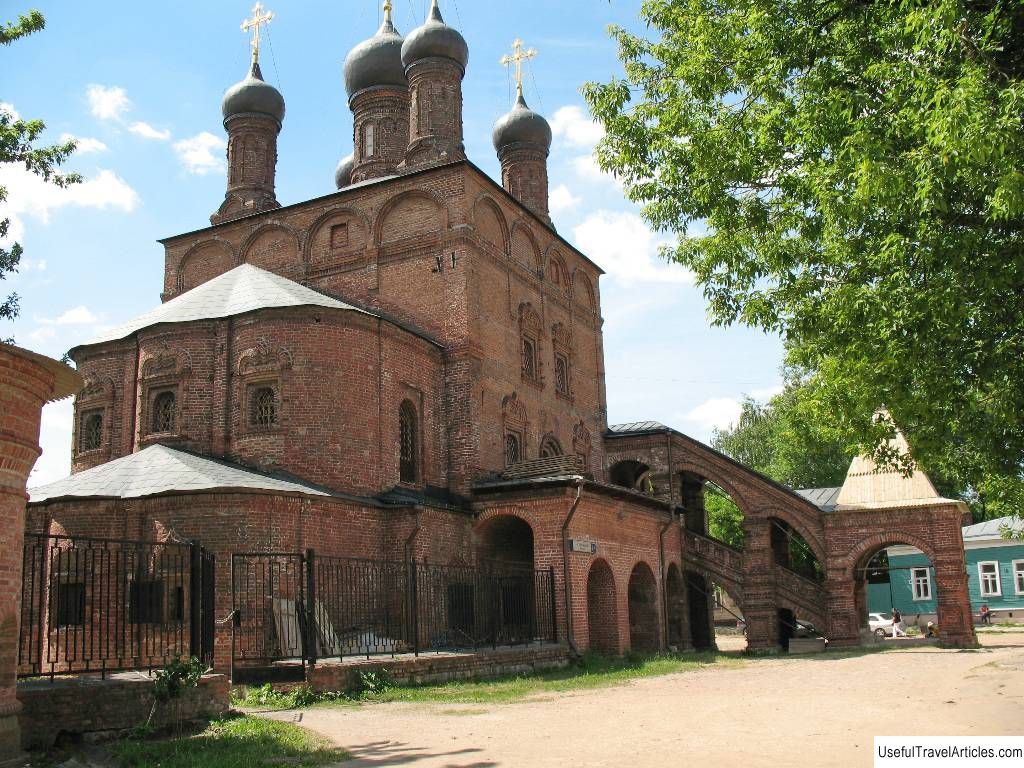
Krutitskoe courtyard description and photo - Russia - Moscow: Moscow. Detailed information about the attraction. Description, photos and a map showing the nearest significant objects. Photo and descriptionIn the Russian Orthodox Church, there is an episcopal title, which is considered one of the most ancient and revered. We are talking about the Metropolitan of Krutitsky and Kolomenskoye , a permanent member of the Holy Synod and assistant to the Patriarch of Moscow and All Russia, entering the period of inter-patriarchy into the independent administration of the Moscow diocese. Krutitsa diocese was formerly called Sarsk and was established in 1261 in the capital of the Golden Horde, Great Sarai. Two hundred years later, the department was moved to Moscow. The former residence of the Bishops of Sarsk in the capital is the Krutitsky Compound, which was founded in the 13th century. The foundation of the Krutitsky CompoundThe name "Krutitsa" means the high left bank of the Moskva River below the place where in Yauza flows into it. In this part of modern Moscow in the 9th-11th centuries there was the village of Krutitsy , next to which the roads to Ryazan and Kolomna passed. Moscow Prince Daniel decided to found a male monastery in Krutitsy. At first, he planned to build his own chambers on the banks of the river, but changed his mind and settled on a men's monastery. The first bishop of Krutits was the Greek bishop Valaam , after whose death the monastery was transformed into a courtyard for the Sarsk diocese established by that time. It was created on the initiative of Alexander Nevsky , who stood up for the "church nourishment" of the Russian people who were under the Horde yoke. Saint Sarsk was called to be a mentor and pastor of thousands of Russian people captured by the Tatars. The first building in the monastery was the Church of the Assumption of the Blessed Virgin Mary , erected in the 13th century, and a century later the monastery that appeared around the temple turned into the center of the bishop's courtyard. The bishops from Sarsk and Podonsk were renamed Krutitskiy. The courtyard was financed from the funds of the grand dukes, who bequeathed substantial contributions for the monastery. Courtyard in the XV-XVII centuries The Golden Horde flourished until the middle of the 15th century, when its former power and greatness were shaken, and soon completely fell into decay. Bishop of Sarsk in those years was Vassian , who moved to Krutitsy from Saray-Batu in 1454. He became the first bishop who received the status of metropolitan and the honorary position of assistant to the Moscow saint. Over the next hundred years, all the bishops of the Krutitsky courtyard were transferred to the rank of metropolitans. In the Assumption Cathedral of the Krutitsky courtyard in the summer of 1612, the second militia, led by Minin and Pozharsky, stopped . Its participants here swore an oath to liberate Moscow from the Polish invaders. For a while, while the Kremlin cathedrals were in the hands of the interventionists, the temple in Krutitsy became the main Orthodox symbol of the country. Poles plundered the courtyard, retreating from Moscow. The Church of the Most Pure Theotokos on Krutitsy suffered the most. The restoration of the courtyard began immediately after the end of the intervention, and historians call the last days of the Time of Troubles the beginning of the flourishing period of the Krutitsy courtyard. In 1650, the foundation stone of the new church was laid. It was the cathedral church, consecrated in honor of the Assumption of the Virgin . The building was crowned with five chapters, and a tent-roofed bell tower was erected nearby. Several years later, the architect Osip Startsev developed the project for the Krutitsky teremok. It was built over the gate leading to the courtyard. The Teremok was decorated with tiled tiles. In the second half of the 17th century, Metropolitan Paul III founded a library in Krutitsy, which contained hundreds of volumes of church books. Under him they built Metropolitan Chambers and began to erect a new cathedral in honor of the Assumption of the Most Holy Theotokos. The monks laid out the monastery garden , now known as one of the first decorative gardens in the capital. Then the courtyard became known as a research center where the Holy Scriptures were translated from Greek into Church Slavonic. Fires and revolutions the Krutitskoe compound fell into decay. The devastation was also facilitated by strong fires that regularly raged in Moscow. The Trinity Fire of 1737 brought special damage to the former monastery, in the fire of which most of the buildings were destroyed or severely damaged.The Krutitsa diocese was abolished in the 80s of the 18th century, and its territory was taken over by the military. Krutitsky barracks were organized in the courtyard, a gendarmerie was placed in the chambers and a guardhouse was organized. Her most famous prisoner was Alexander Herzen , who spent more than six months in Krutitsy before the Vyatka exile. Another misfortune came to the courtyard in 1812 . The French plundered and destroyed the Assumption Cathedral and other buildings and practically destroyed the paintings of the Church of the Resurrection of the Word. It was decided to dismantle the temple, but the process was stopped by Emperor Alexander I . The Resurrection Church was partially rebuilt and renovated according to the project of Konstantin Ton . 1917 brought new misfortunes to Krutitsy. The temples were closed and partially looted, the frescoes were painted over with whitewash, and in the Assumption Cathedral a hostel was organized for the military. Residents were placed in the Church of the Resurrection of the Word, rebuilding the temple into communal apartments. The first restoration of the Assumption Cathedral under the new government began only after the end of the Great Patriotic War. The repaired temple was handed over to the Society for the Protection of Monuments , but for quite a long time it was used as a House of Culture . Only in the 80s of the twentieth century, the cathedral and part of the territory of Krutitsy were transferred to the disposal of the State Historical Museum. The rest of the buildings of the courtyard still remained with the military, and the guardhouse of the Moscow garrison operated on the territory of the courtyard until 1992. What to see at the Krutitsky courtyardThe main temple of the courtyard, consecrated in honor of the Dormition of the Most Holy Theotokos , was first mentioned in documents from 1454. Then it was called a temple in the name of the holy apostles Peter and Paul. Half a century later it was rebuilt and consecrated in 1516 in honor of the Dormition of the Mother of God. In contrast to the Assumption Cathedral in the Moscow Kremlin, the temple was named Krutitsky Small Assumption Cathedral. It was he who played the role of the cathedral during the Troubles and the occupation of Moscow by the Poles. The new cathedral was founded in 1665 . The project involved the construction of two church thrones: the lower one in honor of the holy apostles Peter and Paul and the upper one, the Assumption. Work continued until the beginning of the 18th century, and in 1895 the cathedral church received another throne in the name of Sergius of Radonezh . The current condition of the temple is satisfactory after the last restoration, which began at the end of the last century. The cathedral church, built of red brick, has a four-slope roof, which is decorated with a tier of decorative elements in the form of kokoshniks. The temple is crowned with five onion-shaped chapters. The height of the Cathedral of the Assumption of the Blessed Virgin Mary on Krutitsy is 29 meters. The architectural ensemble also includes a bell tower and two hipped porches attached to the western vestibule. The metropolitan chambers are connected to the temple by side galleries built at the end of the 17th century. The list of preserved architectural structures on the territory of the Krutitsy courtyard is also noteworthy: - The Metropolitan's Palace, called Metropolitan chambers and built in 1655-1670 by order of Metropolitan Paul III. The residence is located near the Cathedral of the Assumption of the Blessed Virgin Mary on Krutitsy and is connected to the temple by galleries. Wall passages between the Assumption Cathedral and the Metropolitan Palace were connected by Krutitsky teremok , which appeared on the courtyard at the end of the 17th century. It is a two-story building, consisting of the holy gates on the first level and a room above them on the second. The construction project was developed by the architect Larion Kovalev. The most famous Krutitsky teremk was brought by the majolica facade decoration . The patterns of decorative tiles were painted by Osip Startsev , a famous Moscow architect who worked in the Moscow Baroque style. Historians believe that another famous majolica master of the 17th century took part in the finishing work Stepan Polubes . On the holy gates of the tower, special attention is paid to the painting on the theme of the Good Silence and the image of the prophet Daniel. The Holy Gates served as the main ones at the Krutitsky courtyard, and from the windows of the teremok the metropolitans greeted and blessed the parishioners and distributed alms to the poor. The red brick temple, consecrated in honor of the Resurrection of the Word, was built at the Krutitsky courtyard in the middle of the 17th century. Until 1991, Resurrection Church was abandoned, but after the transfer of the courtyard buildings to the Russian Orthodox Church, they began to restore it. As long as the restoration work continued in the Assumption Cathedral and the Peter and Paul Church, the Church of the Resurrection of the Word was receiving parishioners for regular services. The temple is currently not operational. Other sights of Moscow are located near the territory of the Krutitsky courtyard. Novospassky Monastery , founded by Ivan III in 1490, rises on Krutitsky Hill on the bank of the Moskva River. The Grand Duke transferred the brethren of the Savior na Bor Monastery, located in the Moscow Kremlin, to a new monastery.        
We also recommend reading Archipelago de Juan Fernandez description and photos - Chile: Valparaiso Topic: Krutitskoe courtyard description and photo - Russia - Moscow: Moscow. |
